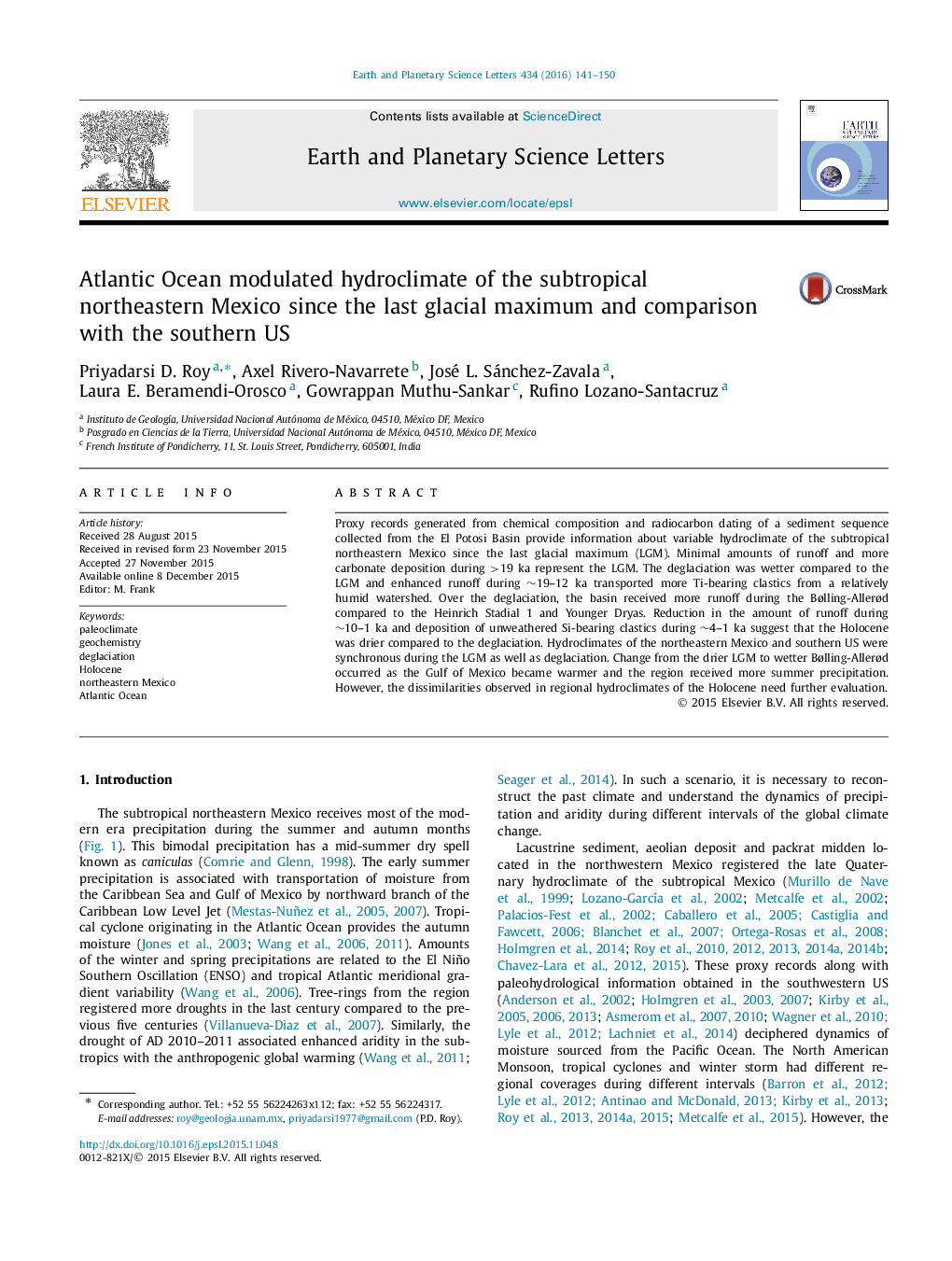| Article ID | Journal | Published Year | Pages | File Type |
|---|---|---|---|---|
| 6427733 | Earth and Planetary Science Letters | 2016 | 10 Pages |
Abstract
Proxy records generated from chemical composition and radiocarbon dating of a sediment sequence collected from the El Potosi Basin provide information about variable hydroclimate of the subtropical northeastern Mexico since the last glacial maximum (LGM). Minimal amounts of runoff and more carbonate deposition during >19 ka represent the LGM. The deglaciation was wetter compared to the LGM and enhanced runoff during â¼19-12ka transported more Ti-bearing clastics from a relatively humid watershed. Over the deglaciation, the basin received more runoff during the Bølling-Allerød compared to the Heinrich Stadial 1 and Younger Dryas. Reduction in the amount of runoff during â¼10-1ka and deposition of unweathered Si-bearing clastics during â¼4-1ka suggest that the Holocene was drier compared to the deglaciation. Hydroclimates of the northeastern Mexico and southern US were synchronous during the LGM as well as deglaciation. Change from the drier LGM to wetter Bølling-Allerød occurred as the Gulf of Mexico became warmer and the region received more summer precipitation. However, the dissimilarities observed in regional hydroclimates of the Holocene need further evaluation.
Related Topics
Physical Sciences and Engineering
Earth and Planetary Sciences
Earth and Planetary Sciences (General)
Authors
Priyadarsi D. Roy, Axel Rivero-Navarrete, José L. Sánchez-Zavala, Laura E. Beramendi-Orosco, Gowrappan Muthu-Sankar, Rufino Lozano-Santacruz,
